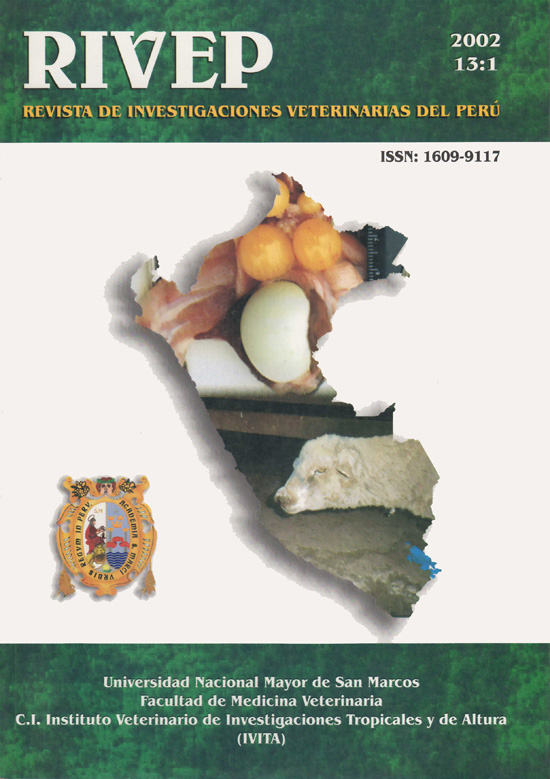ESTUDIO DE LA DIROFILARIOSIS CANINA EN LA RIBERA DEL RÍO CHILLÓN, LIMA
DOI:
https://doi.org/10.15381/rivep.v13i1.1709Keywords:
dirofilariosis, dogs, D. immitis, ELISAAbstract
The main objective of the study was to determine the presence of dirofilariosis (D. immitis) in districts of Lima located along the Chillon river (Puente Piedra, Comas, Carabayllo, Los Olivos and Ventanilla). Blood samples were collected in vacuotainer tubes containing anticoagulant from 200 dogs of 1-10 years of age that were selected at random, without distinction among breeds and sex. Samples were processed using three diagnostic tests: the method of microcapillary, Knott modified for microfilarias, and the ELISA test that detects antigens of secretion and excretion of the adult parasite. The overall results indicated 3.2 ± 2.4% of infection when using the enzymatic ELISA test, whereas 1.5 ± 1.7% when using the Knott modified and the mircocapillary tests. The prevalence of dirofilariosis in the monitored districts was: 4.4% in all three tests in Puente Piedra, 5% using the ELISA test in Ventanilla; 2.5% in all three tests in Comas, 2.5% using the ELISA test en Los Olivos; and 0% in Carabayllo. It was concluded that dog dirofilariosis does not represent a mayor parasitic problem; however preventive and control measures should not be left aside in order to keep the current level under control.Downloads
Downloads
Published
Issue
Section
License
Copyright (c) 2002 Carlos Chipana Q., Amanda Chávez V., Eva Casas A., Francisco Suárez A.

This work is licensed under a Creative Commons Attribution-NonCommercial-ShareAlike 4.0 International License.
AUTHORS RETAIN THEIR RIGHTS:
a. Authors retain their trade mark rights and patent, and also on any process or procedure described in the article.
b. Authors retain their right to share, copy, distribute, perform and publicly communicate their article (eg, to place their article in an institutional repository or publish it in a book), with an acknowledgment of its initial publication in the Revista de Investigaciones Veterinarias del Perú (RIVEP).
c. Authors retain theirs right to make a subsequent publication of their work, to use the article or any part thereof (eg a compilation of his papers, lecture notes, thesis, or a book), always indicating the source of publication (the originator of the work, journal, volume, number and date).



